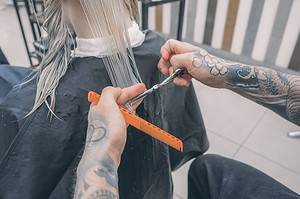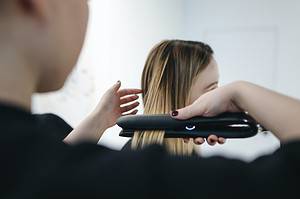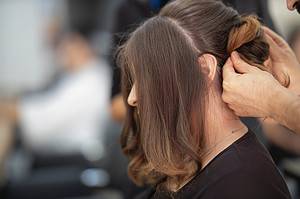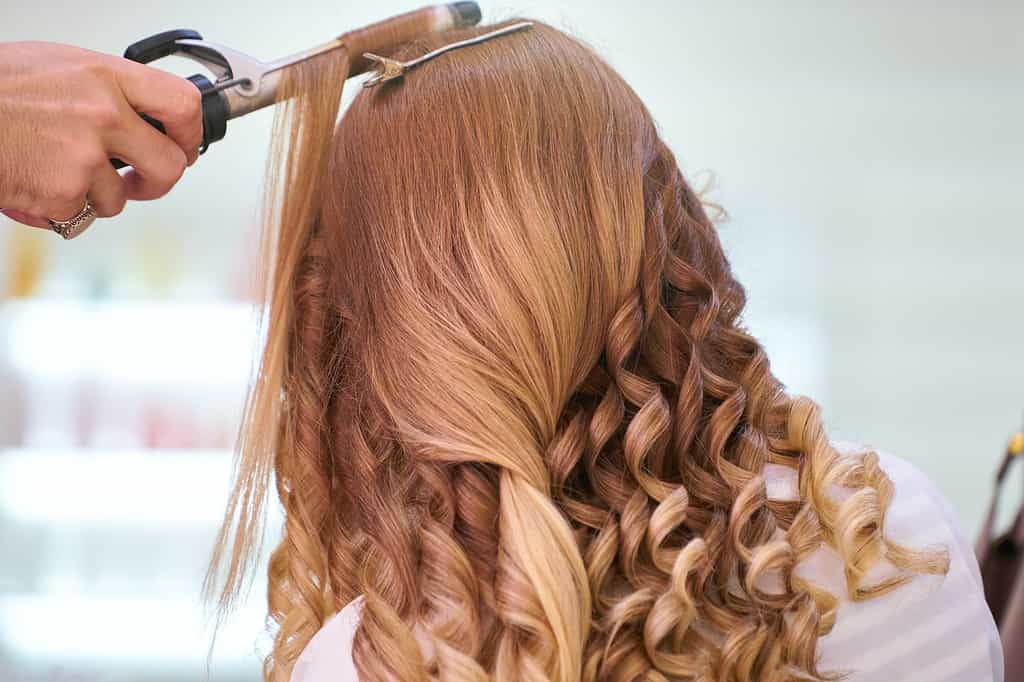Did you know that chemical hair straighteners can cause cancer?
A recent study by the National Institutes of Health (NIH) revealed that using chemical hair relaxers and straighteners has an associated risk of uterine cancer.
Black women are disproportionately at risk of uterine cancer because they use hair straightening products regularly and start using them younger than other races.
These findings have led lawyers to file lawsuits against manufacturers and distributors on behalf of victims diagnosed with cancer after using hair straightening products.
You may be entitled to compensation if you’ve been diagnosed with uterine cancer following the regular use of chemical hair straightening products.
Read on to learn about product liability and whether you are eligible for compensation in a chemical hair straightener lawsuit. We shall also guide you on how to hire a chemical hair straightener lawsuit attorney.
The Link Between Chemical Hair Straighteners and Uterine Cancer
The NIH study, referred to as the Sister Study and conducted by the National Institute of Environmental Health Sciences, involved stats from roughly 33,500 American women aged between 35 and 74.
The study’s objective was to uncover the causes of various illnesses, including breast cancer. About 378 women received a uterine cancer diagnosis during the 11-year study.
Uterine cancer accounted for three percent of all new cancer cases, making it the most prevalent malignancy in the female reproductive system.

When analyzing the data of the female study participants, researchers found that 1.64 percent of women who developed uterine cancer have never used chemical hair straighteners. However, the rate increased to 4.05 percent among women who were regular users of the products.
Interestingly, the study found that other hair straightening treatments, such as bleach, dyes, highlights, or perms, don’t increase cancer risk. These findings were consistent with further research that claimed women’s use of straighteners increased their chance of developing hormone-related cancers.
What Hair Straightening Chemicals Are at Issue?
Researchers uncovered certain chemicals frequently added in chemical hair straightening treatments that potentially increase cancer risk. But they did not name particular brands of these products that do so.
These chemicals include:
Parabens: Frequently used as a preservative to inhibit the growth of germs in many cosmetic items, parabens mimic estrogen and disrupt the body’s hormonal production.
Phthalates: These are components used in beauty products to dissolve other compounds and strengthen polymers. However, phthalates can intensify the effects of other hazardous chemicals in the recipe.
Bisphenol A (BPA): This ingredient was frequently used in cosmetics until it was outlawed in 2006. It is still allowed in the packaging of beauty products, however. BPAs are endocrine-disrupting substances that change signaling processes that involve estrogen and other hormones when ingested via the skin.

Metals: These substances are found naturally in the soil and air, and many primary chemicals are used in hair care products.
Formaldehyde: The FDA has linked formaldehyde, which most chemical hair straightening products generate, to cancer.
The scalp is one of the most delicate parts of the body, and applying these products may cause burns or sores, making it easier for the toxic chemicals to be absorbed and spread to other parts of the body.
Heat-generating appliances like hair dryers and flat irons may also cause the scalp to absorb more toxins.
Who Is Most Likely Affected?
Black women made up almost 60% of participants in the NIH survey who reported using chemical hair relaxers in the past year.
Researchers found no racial differences in the risk of uterine cancer associated with using chemical straighteners.
However, black women are more predisposed since they use these products more and are more likely to use them from a tender age.
The Financial and Psychological Impacts of Uterine Cancer
Four Black women filed a Chemical hair straightener lawsuit against L’Oréal and other manufacturers in November 2022, claiming that the chemicals in these hair products caused them uterine cancer and other serious health problems.
Three of the women spoke about their encounters with the illness, citing:
- Intense medical treatments, such as hysterectomies, chemotherapy, and other procedures, are undertaken to prevent cancer spread.
- Chronic pain results from the spread of the disease through the body.
- Lost wages, medical bills, and other disease-related costs.
- Mental anguish resulting from the increased risk of cancer resurgence and mortality.
- Loss of fertility- Most women diagnosed with uterine cancer and those who receive treatment for it are of childbearing age, and some are below thirty at the time of their diagnosis.
- Increased risk of other cancers- Uterine cancer patients are more likely to acquire colon or breast cancer later in life.
Seeking Compensation for the Expenses and Impacts of Uterine Cancer
Personal injury law covers a wide range of accidents and lawsuits, including a segment for product defects known as product liability.
Manufacturers are responsible for ensuring that the goods they sell to customers are reasonably safe when used as intended. They also disclose any potential dangers on the product’s label to inform customers.
A product liability claim may result from three kinds of product defects:
- Engineering flaws, often referred to as design flaws, occur during the product’s development and affect all batches that use the same design or formula.
- Manufacturing flawshappen when anything goes wrong during the production process, such as a piece of shattered glass or metal contaminating the batch or a product being produced at a temperature that lowers its quality.
- Packaging flaws occur when there’s an error with the manufacturer’s labeling instructions or product warnings. Legally speaking, manufacturers must label products, informing consumers of any identified risks and how to use them correctly.
The initial lawsuits filed in court against producers of chemical hair straightening products revolved around packaging flaws.
The plaintiffs claim that the labels on these items exclude any warnings that regular use may raise the risk of uterine fibroids, uterine cancer, or breast cancer in the user.

Despite NIH experts’ insistence that the study did not conclusively establish that hair straightening products cause cancer, the plaintiffs and their attorneys disagree.
Other women who regularly used chemical hair straightening treatments and later developed uterine cancer will likely sue the manufacturers.
If using these products has caused you harm, you will need the help of a knowledgeable product liability attorney to seek compensation.
What Are the Eligibility Requirements for Filing a Chemical Straightener Lawsuit?
Women who have been diagnosed with endometrial, ovarian, or uterine cancer may be entitled to compensation if they meet the following criteria:
- Used a chemical hair straightener or relaxer at least five times a year.
- Diagnosed with cancer four or more years after the first whole year of product usage
Typically, women with the BRCA gene mutation and those with a family history of ovarian or uterine cancer are disqualified from suing.
But contact us right away to find out if you’re eligible for compensation if you used a chemical hair straightener and were later diagnosed with uterine or ovarian cancer.
What Kind of Compensation Can I Expect from A Chemical Hair Straightening Lawsuit?
The amount of compensation is influenced by the damages incurred by each claimant. Generally, the payment covers direct costs like hospital bills and lost wages.
It also covers intangible damages like pain and suffering that impact the victim’s physical and emotional anguish.
The surviving family members may bring a wrongful death lawsuit to recoup their damages, such as loss of companionship, lost future income, and burial costs, when the victim dies due to an illness caused by a negligent manufacturer.
Do You Need an Attorney to Assist You with Your Claim?
Yes, you need an attorney throughout the claims process.
Product liability lawsuits are difficult to win, especially those involving large corporations. These corporations and insurance carriers can afford to retain experienced legal counsel to defend them in court.
As a result, the legal knowledge of the defense will be superior to that of a plaintiff who needs to gain familiarity with the laws regulating product liability claims and the claims procedure.
These claims will probably be merged with other ones through the creation of a multidistrict lawsuit (MDL) or a class action lawsuit since they often affect several victims.

The U.S. court system commonly uses MDL and class action lawsuits to avoid being overloaded by similar claims against one defendant, such as a manufacturer.
In MDLs, the claims are only joined for the case’s preliminary (discovery) phase. The identical witness testimony and supporting documentation are available to all claimants and their attorneys.
All unresolved claims will be returned to their native jurisdiction after the discovery process for a separate trial.
Numerous factually identical claims are combined into one lawsuit in class actions. Several claimants are chosen to represent the class, and the trial proceeds using the evidence included in their claims.
Services an Attorney Can Provide for Your Claim
After a person is diagnosed with cancer due to consistent usage of chemical hair straightening treatments, an experienced product liability attorney may offer various services to help them in the claims process.
A lawyer provides various services, including:
- Identify the company that produced the product the claimant used.
- File a lawsuit against the manufacturer. The statute of limitations, established by the state where the claim is made, is a deadline by which all personal injury cases must be filed.
- File a case within the deadline, or you lose your ability to pursue compensation through the court system.
- Assemble the detailed medical data and paperwork necessary to establish a causal relationship between the usage of the product and the claimant’s adverse health effects.
- Present the case in court during pre-trial hearings, when motions are filed, responses are made, and when selecting a jury.
- Negotiate a settlement with the negligent manufacturer or insurance company that appropriately reimburses the claimant for damages.
- Assist the claimant in obtaining compensation through a court judgment or a settlement agreement.
- Continued representation if the defendant challenges the judge’s decision.
How Much Does a Product Liability Lawyer Cost?
Most individuals injured due to someone else’s negligence are reluctant to hire a skilled product liability lawyer to help them with their claims.
The most common excuse is that clients believe they cannot afford legal representation, especially in light of the costs and damages associated with the accident (or illness).
However, most personal injury attorneys adopt the contingency fee pricing approach, which guarantees that everyone who needs legal help with a lawsuit against a chemical hair straightener manufacturer can get the help they need.
The contingent fee billing process operates as follows:
- You must sign a contingent fee agreement if you and the lawyer decide to work together following a free initial case review.
This legally enforceable contract specifies the services your lawyer and their firm will render and sets down a percentage of the settlement money for your claim as the team’s fee.
- Product liability attorneys don’t need a retainer, unlike other lawyers who practice law on cases other than personal injury. They may start working on your case immediately without waiting for an initial fee.

Similarly, you won’t get any invoices from your lawyer during the claims process, unlike other attorneys who charge their customers by the hour. You can proceed to work without worrying about making payments on time.
- Your personal injury lawyer will accept the money from the agreed-upon settlement or award on your behalf after the case is over. They’ll put this cash into a trust.
Any medical liens imposed on the settlement by health insurance companies or healthcare providers will be satisfied out of that trust.
Additionally, they will remove the agreed-upon portion of their payout. They will release the remaining funds to you when you complete the paperwork to close the case.
Start Your Hair Straightener Lawsuit Today
Women diagnosed with cancer due to harmful hair straightening products may be eligible for compensation. But product liability is complex, so you will need the right lawyer to file a lawsuit successfully.
Legal Giant is a lawyer referral service provider, and we can link you up with the best chemical straightener lawsuit attorney near you. Our partner attorneys are ready to fight for you to get the compensation you deserve.
Contact us for a free, no-obligation consultation today.

